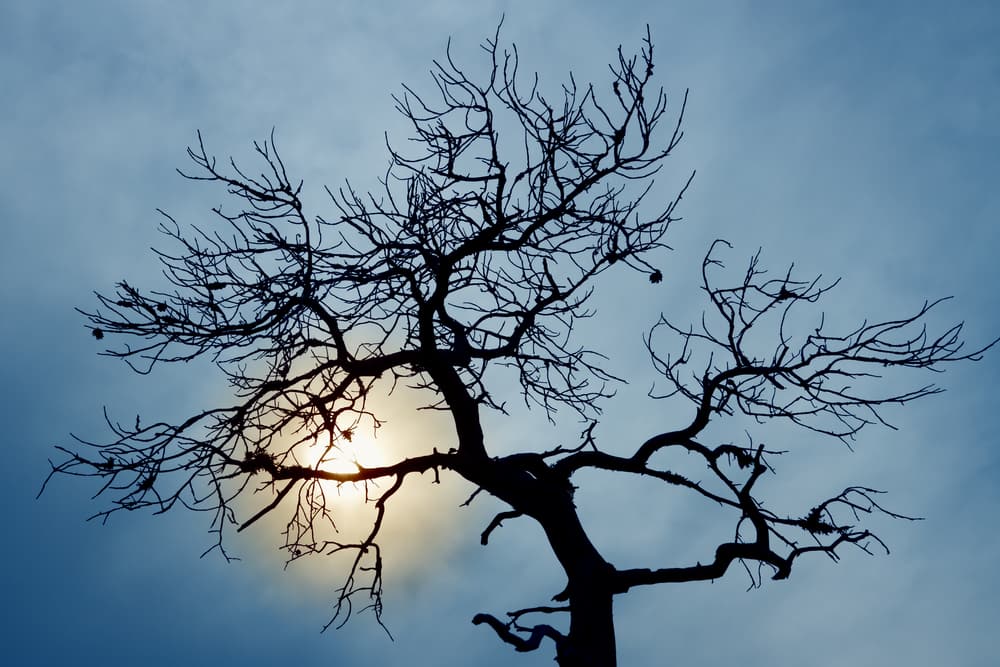
Expert tree service in Vancouver, BC, Canada teaches tree owners about tree dormancy.
Defining “Dormancy”
Deciduous trees are marked by periods of rapid growth over the summer and periods of dormancy in the winter. Dormancy is the time of the year where the tree rests and prepares for another vigorous growing season next year.
Dormancy is displayed in all trees, both evergreen and deciduous but it is more obvious in deciduous trees. Dormant deciduous trees will lose their leaves and look nearly identical to dead trees while dormant evergreen trees simply stop growing over the winter.
Staying dormant over the winter is a tree’s natural defence against the ravages of winter. Deciduous trees are not adapted to harsh winter conditions like evergreens so instead of staying metabolically active they go dormant until growth conditions are more favourable.
Signs That a Tree is Dormant
Despite all appearances, trees that are dormant are not dead. In fact, there are some quick ways to distinguish between dead and dormant trees. Some of these signs are:
- Flexibility: Bend a branch 90 degrees perpendicular to itself. If it breaks then that section of the tree is dead. If it bends and whips back into place it is living.
- Scratch Test: Make a thin scratch in the bark with a knife or fingernail. If the bark yields easily then the tree is alive. Also, there will be moisture and a greenish colour in the wood.
- Healthy Bark: Trees that are dead will have bark that is flaky and may show signs of fungus or insect infestation. Just like skin, when a section of tree is unhealthy, the bark will look different.
Being able to distinguish between dead and dormant trees is important when it comes to seasonal trimming that takes place in the winter while the tree is dormant. If it is intended that only dead limbs are removed then being able to tell the difference is vital.
Caring for Dormant Trees
Dormancy doesn’t mean that the tree isn’t biologically active. It just means that the normal outward signs of life like leaves and fruit aren’t there. A dormant tree can still benefit from good practices like watering and fertilization. Mulching is a great way to preserve moisture and protect its roots over the winter.
For trees that are late to exit dormancy in the spring, most of the time simply waiting will be all it takes. Trees are subject to light cycles and ground temperatures. Often these two factors can contribute to a microclimate that makes the tree slower to come back to life in the spring.
Signs a Tree is Dead
Dead trees can look like dormant trees to the untrained eye but there are few things to look out for that can tip an owner off that a tree is dead. The first thing is pests and fungus. As a tree dies, it usually takes a few years before it is obvious. This allows fungus and pests to start to decay dead sections in the tree. Even in the winter, the signs of infestation are an obvious sign that the tree is dead.
The second sign a tree is dead is brittleness. Dead trees don’t hold moisture so their bark and twigs become brittle. Signs of brittleness usually litter the ground around the tree in the form of flaking bark and small broken limbs.
Dealing with Dead Trees
If trees are already dead, there is nothing more that can be done. Removing a dead tree can prevent it from damaging property or causing injury. Dead portions of trees can break off and hit people or structures. Professional tree removal is a good option when scheduled from a reputable tree removal arborist.
About VI Tree Service
VI Tree Service is the local Vancouver, BC tree service. With a team of over 80 professionals, they specialize in tree risk assessments and tree health care. Call (844) 884-8733 to schedule an assessment of the health and safety of the trees around a home or business.

